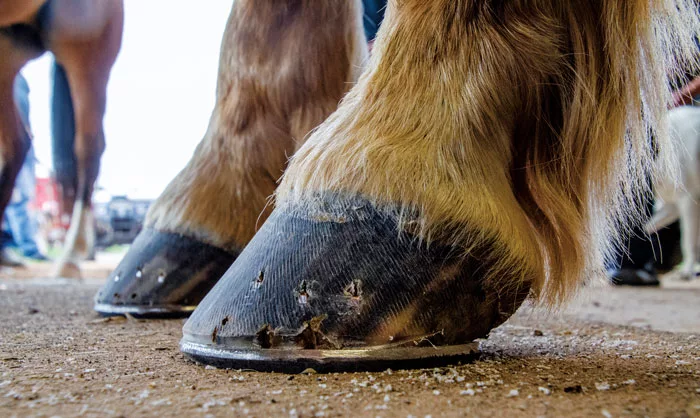American Farriers Journal
American Farriers Journal is the “hands-on” magazine for professional farriers, equine veterinarians and horse care product and service buyers.

There are two biochemical pathways in which sulfur is important related to hoof function. The first of these is called a disulfide bond. It comes from the sulfur found in methionine, which is a sulfur-containing amino acid. This bond is important in the structural strength of the hoof capsule. The other pathway involves the sulfur from biotin. This is called a sulfhydryl bond and is important in flexibility of the hoof capsule.
We have all owned “that” horse. You know, the one with poor-quality feet? Often, we have learned the phrase, “no foot, no horse” is very applicable to many of these horses and maintaining their soundness is a big problem. For those of us with “this” horse, we hear and read all types of recommendations to “fix” this problem. The internet and social media are full of misinformation and marketing material to which we are constantly exposed.
I remember my mother adding gelatin as a daily supplement to “help” her fingernails grow. This is one of the earliest remedies many horse owners try when they have a horse that has poor-quality feet. I often see this recommended on social media by the “experts” and fellow horse owners. Since this article is about biotin, let me explain why I have included gelatin — gelatin has no biotin.
Biotin is a sulfur-containing water-soluble B-vitamin and the only sulfur-containing B-vitamin. I’m not sure when or even how someone determined sulfur was important in the formation of the hoof. I guess it was when someone noticed a smell similar to burning hair when they put a hot shoe on the foot to…